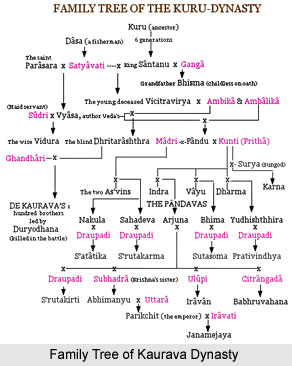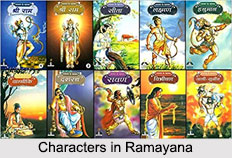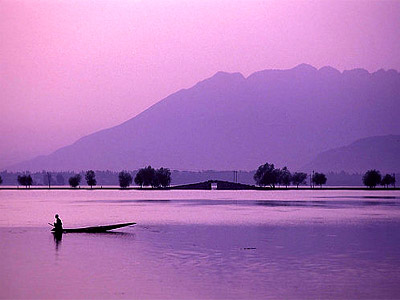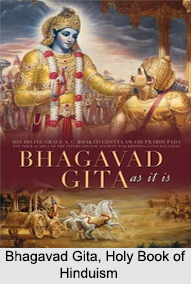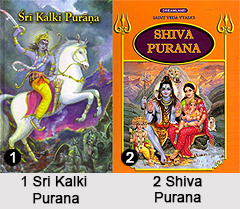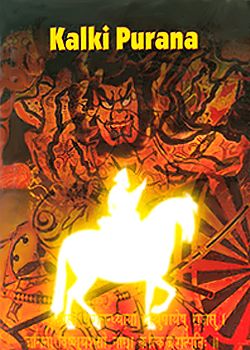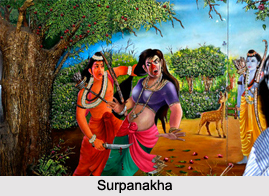Brahma Purana is one of the major eighteen Puranas. It is a Hindu religious text. Brahma Purana is in the form of teachings by Brahma to Daksha and contains a number of verses. This is also called the Adi Purana. There is a special treatise in this book on Orissa, an ancient holy region of Bharata. There is in this a special annexure explaining the intimacy between Shiva and Surya, which is a deviation from other Indian Puranas. According to Brahma Purana it was Brahma who narrated the story of Brahma Purana to the sages on mount Meru. The Narada Purana says that Brahma Purana contains 10,000 verses. The Purana also as a class of literature represents different phases and aspects of life lived by the people in diverse ages.
Lord Brahma as the Narrator
The Padma Purana classifies Brahma Purana as Rajasa and assigns it to Lord Brahma, the god of rajas quality. The Puranas are classifiable as sattvika, rajasa and tamasa on the strength of quality which they possess predominantly. But a number of studies on the Brahma Purana have revealed that it is more sattvika than rajasa because a considerable portion of this Purana is devoted to the glorification of Purusottama Vasudeva, Sri Krishna, Sun-god and Lord Shiva. The Purana speaks of Ekamra-kshetra and Purusottama-kshetra as being sacred to Shiva and Vishnu respectively. Lord Vishnu and Shiva are the paramount lords in the Brahma Purana while Brahma occupies the third position. Brahma himself has spoken highly of Vishnu and Shiva in the Purana. The Purana takes its name after Brahma. It is because Brahma is the main speaker here. Rather it can be said that the Purana derives its name merely because it has appeared through the mouth of Brahma. Regarding the date of composition of Brahma Purana no particular date can be assigned.
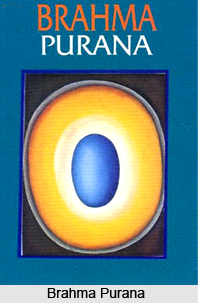 Division in Brahma Purana
Division in Brahma Purana
Brahma Purana contains two parts-Purva Bhaag and Uttar Bhaag. Purva Bhaag depicts the entire narrative of the creation of cosmos and at the same time the tales of Lord Rama and Lord Krishna. Uttar Bhaag contains a detailed description of Purshottam Tirtha prominent among all the holy places.
A large portion of Brahma Purana deals with the topics of religious nature. The Brahma Purana is predominantly Vishnuite. The Purana glorifies Lord Vishnu predominantly. The legends of Shiva including the immolation of Sati, destruction of Daksha`s sacrifice, Shiva`s marriage with Parvati, his sports on the Himalayas and ultimately his departure for mount Meru are also important parts of Brahma Purana. The Purana also records one hundred and eight names of the solar deity, and also illustrates his glory and origin. In spite of the presence of multitude of gods, the trend of Brahma Purana is inwards monotheism. The Purana advocates that all gods stand on equal footing.
Concepts in Brahma Purana
In the ultimate review of this Purana, there is no difference among Brahma, Vishnu, Shiva or any other god. A unit of fourteen chapters in the Brahma Purana deals with some important aspects of philosophical nature. Though the ultimate end is the attainment of liberation, the means employed to that end consist in the knowledge of principles (tattva-gyanam) relating to Prakriti and Purusha. The philosophy of this Purana, as of other Puranas is generally derived from the concepts evolved and developed in the systems of Samkhya Philosophy and Yoga.
According to the Brahma Purana, if anyone realizes the truth that Divinity is eternal and exists unceasingly regardless of Creation or Dissolution, then that individual can be said that he has attained the self knowledge.
From the stories narrated in the Brahma Purana it is known that Brahma endeavoured to propagate his knowledge of divinity and the mystery of creation among the gods and the sages. Brahma initiated his task by imparting knowledge to Sage Narada by describing all the 24 incarnations of Lord Vishnu. Narada in turn imparted this knowledge to Sage Vyasa. Ultimately, Ved Vyas, after compiling that divine knowledge in 18,000 shlokas, made Shukadev read it. In this manner, Srimad Bhagwat was popularized in the whole world. Hence Srimad Bhagwat deals with the subject of creation of cosmos and the true spirit of Divinity and Mysticism.
Brahma Purana also depicts the utterance of Brahma after his self revelation and the true knowledge of Divinity. He articulated that his speech does not incline towards non-virtuousness, his mind never follows the path of non-virtuousness, and his senses are not influenced by the non-virtuous desires because he always possess Lord Vishnu in heart with great dedication. Through his teachings he made the world to explore the essence of divinity, which lies latent in the individual`s heart. This self revelation would lead them to deviate from the path of vice.
This is the very essence of the `Bhagwat` religion, the subject with which the Brahma Purana deals with. The very idea, which the Brahma Purana articulates is that as long as man does not take refuge at the feet of Lord Vishnu, he suffers from the petty worldly matters. The shelter in the feet of Lord Vishnu purges out the fear, sorrow, greed and earthly attachments, which are the root cause of the miseries.
Therefore, surrendering oneself in the feet of Lord Vishnu is the only means to achieve liberation from the burden of the painful existence of the world. This is the keynote of the Brahma Purana.













